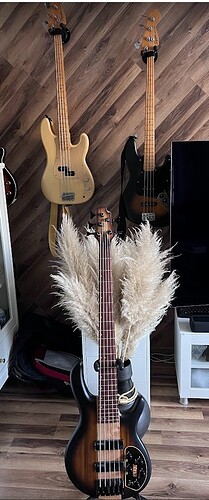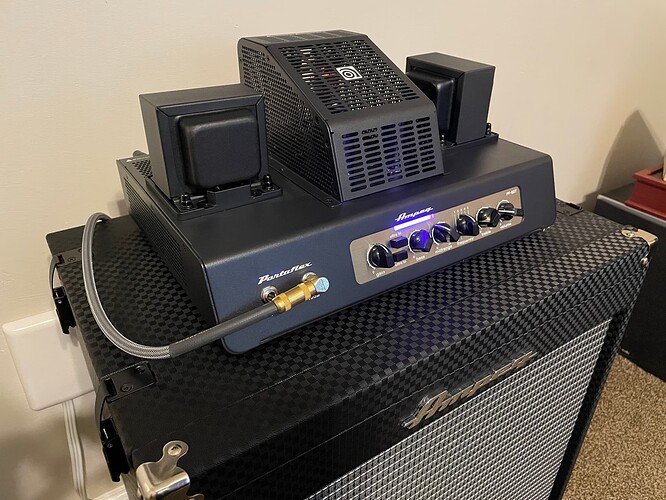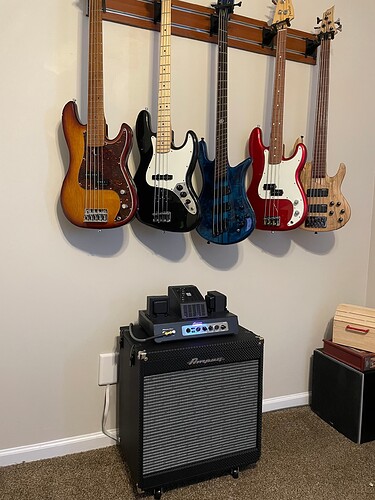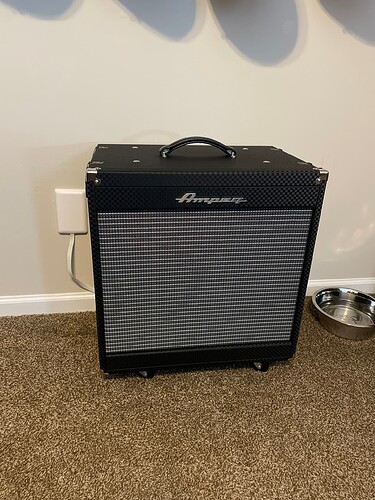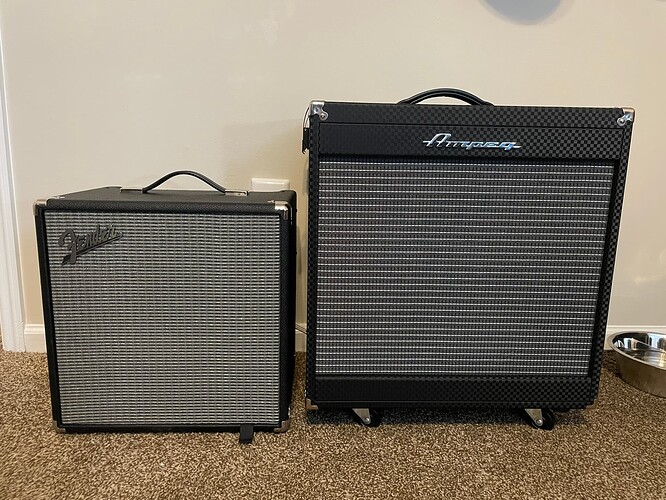So I’m actually perfectly happy with my guitars. I honestly can’t actually think of another one I would want. There was only one thing left, I wanted something a bit more than my Fender Rumble 40. It was the last piece of the puzzle, so to speak.
So I started researching amps. If it was going to be an upgrade, I wanted it to be a radical upgrade. I didn’t want to just get a “bigger Rumble”. That, to me, meant amp + cab.
And that’s I became paralyzed with options.
I spent tons of time on YouTube, Sweetwater, music stores and more. I tried all different kinds. The more I looked, the more I had no idea what I wanted. Every question I asked on forums and Discord only left me with more questions.
It was then that I sat back and did some serious introspection. Step 1: Be honest with myself. Did I really need an amp? No. Could I do it with amp sims and such? Sure. Would I do it with amp sims? Nope. How do you really do things? I don’t mimic tones. I’m not going to spend hours tweaking my HX to perfectly recreate Slappy Kincaid’s bass tone from track 3 of his seminal album “Punch You in the Gabba”. What I’m going to do is set up a few presets that sound the way I like and I’m only going to use those. So what’s a common factor in all those presets? The first thing I do, no matter what, is drop in a B-15 sim.
I mentioned it in another thread but I love the B-15 sound. It’s used in the vast majority of music that I love and play. If I’m creating a tone from scratch, I gravitate towards the B-15. At this point, if a doctor listened to my heartbeat in a stethoscope, it would probably sound like it’s running through a B-15…which probably doesn’t say much about my health but I digress…
The problem is, I didn’t want the price, maintenance or responsibility of owning an important bit of vintage equipment. So I got the next best thing.
The final piece of my rig. The Ampeg PF-50T. This thing sounds incredible. It’s everything I could have hoped for and it’s allowed me to clear the amp and cab sims out of my presets. Even better, it works better with the acoustics of my room. The Fender 40 had a bunch of rumble spots…forgive the pun…where I would be playing normally then I’d hit certain notes that would shake the whole room. Considering the space it’s in and such, the Ampeg is acoustically perfect for me. I haven’t found a resonance spot with it.
At the same time, if I flatten the EQ on it, it produces a surprisingly clean sound that I can still use an amp sim if I wanted. It’s more versatile than I expected it to be…which is probably why its predecessor was so popular in studios.
Although I completely misjudged how friggin’ big this thing is. Seriously, when it was delivered I had to pick my jaw up off the floor. It’s also heavy…damn heavy… but I won’t be lugging it around much if at all.
And now we have come to my personal cure for GAS: my near-pathological need for very specific aesthetics of my office/studio. I cannot physically put anything else in here without messing up my peaceful and clutter free environment that literally need to be able to retreat to.
